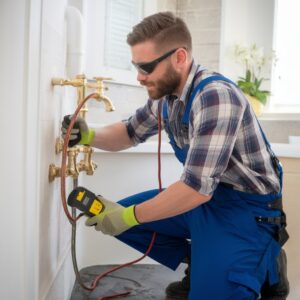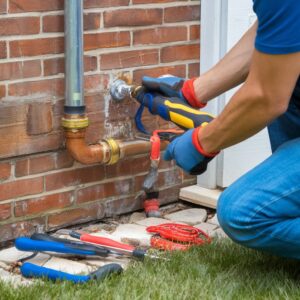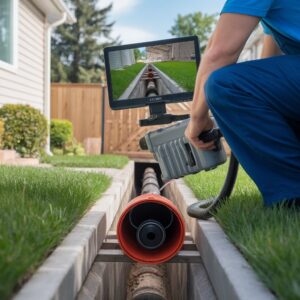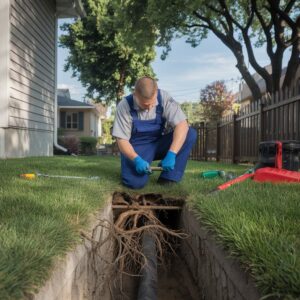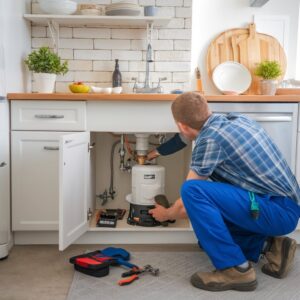Knowing how to excavate underground is crucial for homeowners facing buried utilities or plumbing repairs. From installing new lines to fixing leaks, a methodical approach saves time and prevents hazards. DNA Plumbing and Heating, as trusted local excavation contractors, regularly handles excavation and underground plumbing services with precision, ensuring your property’s long-term safety. By understanding non-destructive digging practices, you protect valuable resources while completing essential underground pipe excavating and repair tasks.
Whether you’re addressing a suspected water leak or planning utility upgrades, thorough preparation is key. Digging blindly can result in significant property damage, injury, or legal complications. Our team at DNA Plumbing and Heating follows safe trenching around buried utilities, leveraging modern techniques like vacuum excavation or hand-dug verification. Below, we’ll break down the steps for undertaking underground pipe excavation, helping you confidently resolve plumbing challenges without compromising your home’s future.
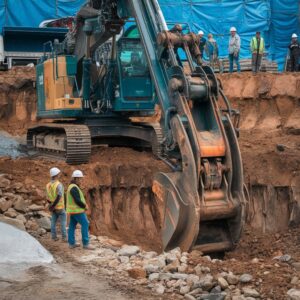
Preliminary Assessments and Planning
Effective underground pipe excavation begins with careful planning. First, research local regulations, acquire necessary permits, and request utility marking. Damage prevention for underground utilities is paramount—mismarked or ignored lines can cause expensive or dangerous breakages. At DNA Plumbing and Heating, we prioritize site mapping and official guidelines to ensure compliance. A thorough risk assessment, analyzing soil stability, proximity to structures, and weather impacts, sets the foundation for a successful project.
Once you’ve gathered essential information, confirm that your timeline aligns with required permit approvals and contractor availability. Proper coordination helps you avoid rushed decisions that can end in accidents or missed requirements. For instance, if a regional inspection is mandatory, build in time for those appointments. By methodically scheduling each step—from site prep to post-excavation inspections—you enable a smooth, hassle-free process for both homeowners and excavation professionals.
Locating and Marking Utilities
Before any dirt is moved, it’s vital to accurately locate underground utilities, including gas lines, water pipes, sewer laterals, and electrical cables. Non-destructive digging often starts with employing imaging tools or calling the local “811” service for precise marking. At DNA Plumbing and Heating, we use advanced detection equipment to identify potential hazards. By following these safe excavation techniques, we safeguard workers, homeowners, and the overall property during underground pipe excavation and repair.
Aside from marking visible lines, remember that some underground structures—like older septic or drainage lines—may not show on utility maps. We advise thorough investigations using acoustic detection or ground-penetrating radar. Even shallow conduit lines are vulnerable if overlooked. Correctly flagging and labeling each line prevents cutting active pipes and wires. This extra preparation upholds safe trenching around buried utilities while reducing the risk of unplanned service disruptions.
Choosing the Right Excavation Method
Deciding how to excavate underground depends on factors such as soil conditions, pipe depth, and the nature of the plumbing issue. Conventional digging with backhoes or mini-excavators may suffice for easily accessible sites. However, when fragile lines lie close together, we often recommend precision excavation techniques like vacuum excavation. At DNA Plumbing and Heating, we adapt our tools and strategies to each project, aiming for minimal surface disruption and maximum safety.
For more delicate jobs, non-destructive digging uses gentle suction to remove soil around critical areas. This gentle approach reduces the chance of hitting pipes or cables. On the other hand, manual trenching may be ideal for extremely tight spaces or areas near a building’s foundation. By tailoring excavation methods to each property’s unique needs, our team preserves landscaping, prevents additional structural work, and completes underground pipe excavation and repair more quickly.
Safe Trenching Practices
Even with robust planning and marking, safe trenching around buried utilities remains an ongoing priority. Maintaining stable trench walls prevents cave-ins, which pose serious risks to crew members and can harm existing lines. DNA Plumbing and Heating uses protective systems like trench boxes or hydraulic shoring to reinforce sidewalls. We also monitor changing soil conditions, adjusting precautions as needed to ensure a secure, efficient excavation environment.
Properly sloping or benching the sides of deeper trenches further minimizes collapse risks. Workers must consistently check for water infiltration, as standing water can weaken trench walls. Regular communication at the job site helps spot potential issues in time. By integrating best practices—from daily inspections to wearing appropriate protective gear—everyone remains safe, reinforcing our commitment to reliable excavation and underground plumbing services on US home properties.
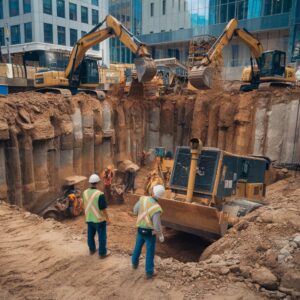
Removing Soil and Debris
Efficient soil removal allows you to focus on underground pipe excavation without constant obstructions. Operators often pile excavated material far enough away from the trench edge to avoid accidental cave-ins. If heavy debris or large volumes of earth are involved, we recommend scheduling transport off-site. DNA Plumbing and Heating ensures that the work area stays tidy, with organized disposal that respects environmental guidelines and reclaiming materials where feasible.
Some projects require partial backfill before installing or repairing pipes—especially if multiple stages are involved. When performing underground pipe excavating and repair, we often position drains or submersible pumps to remove water and keep the trench dry. This approach avoids sloppy clay or muddy conditions that hinder progress. By systematically managing waste soil and water, we maintain a safe workspace that aligns with our commitment to precision excavation techniques.
Underground Pipe Excavation and Repair
Once the trench is clear, the real work begins. Our licensed technicians inspect the exposed pipe to confirm the problem’s scope—corrosion, cracks, root intrusion, or joint misalignment. In some cases, we can address minor damage on-site with patching or sealants. More extensive wear may require partial or full pipe replacements. At DNA Plumbing and Heating, we use sturdy materials that meet US plumbing standards to ensure a lasting repair.
After the necessary repairs, we perform leak tests to confirm everything is sealed and functioning. Underground pipe excavation and repair moves to the final steps only when readings meet safety thresholds. Any new lines or fittings must be joined securely and tested under pressure. By completing thorough quality checks, we verify our work while avoiding repeated issues later. It’s part of our long-term promise to keep your plumbing system performing optimally.
Backfilling and Site Restoration
Once the inspection phase is complete, the crew starts backfilling around your newly repaired pipes. Proper compaction is essential to prevent sinkholes, shifting soil, or damage from freeze-thaw cycles. Layer by layer, we compact the material, reducing air pockets. This step maintains consistent ground support under driveways, walkways, and landscaped areas. We strive to leave your property looking as close as possible to how it appeared before excavation began.
Soil stability is key for strong structural integrity over time. DNA Plumbing and Heating uses the appropriate backfill mix—often a combination of native earth, gravel, or sand—to match local codes and your project’s unique requirements. Compaction ensures water runs off properly without pooling near newly installed pipes. If necessary, we fine-tune the final grading to direct rainwater away from the site, safeguarding your home’s foundation from potential drainage problems.
Damage Prevention for Underground Utilities
Preventing future incidents hinges on vigilance and proper documentation. Keep records of your finished projects, noting pipe layouts or newly installed lines. If you add fences, trees, or structures later, consult these notes to avoid accidental hits. Regular checkups—like camera inspections—can reveal small leaks before they escalate, saving both time and money. At DNA Plumbing and Heating, we often recommend annual maintenance to preserve the condition of newly repaired lines.
Additionally, consider updating your homeowner’s insurance if you’ve added or repaired major underground components. Some policies cover sudden pipe failures but may exclude older, unverified lines. Maintaining up-to-date information ensures smoother claims if an unforeseen incident occurs. Proactively protecting your underground utilities—by recognizing changes in water pressure or slow-draining fixtures—lets you address minor issues promptly, stopping major excavation jobs from becoming a frequent headache.
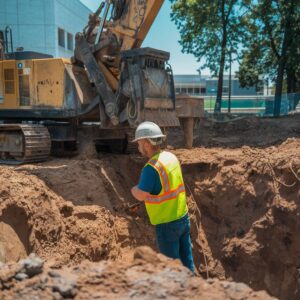
Working with Professionals
While certain landscaping or minor digging tasks might be DIY-friendly, extensive underground pipe excavation and repair should be left to certified experts. Improper digging can rupture gas lines, flood basements, or compromise structural foundations. DNA Plumbing and Heating brings proven expertise and advanced equipment to each job. By partnering with professionals, you receive efficient solutions without gambling on your home’s safety or risking out-of-code installations.
State regulations often require specific licensure for excavation and plumbing tasks, ensuring compliance with building codes. Trained crews handle complicated aspects—like trench stability, utility coordination, and safe equipment operation. Moreover, if issues arise mid-project, professionals know how to adapt. At DNA Plumbing and Heating, we value transparent communication from start to finish, helping homeowners make informed decisions. Our team remains committed to getting the job done right, every step of the way.
Conclusion
Understanding how to excavate underground requires cautious planning, proper permitting, and skillful execution. By locating utilities, selecting the right machinery, and ensuring precise trenching methods, you avert costly mishaps. From initial survey to final backfill, DNA Plumbing and Heating streamlines the process to uphold both safety and customer satisfaction.
If your home needs excavation and underground plumbing services, count on our licensed professionals to handle every detail. We adapt our approach to minimize property disruption while adhering to US standards. Contact DNA Plumbing and Heating for underground pipe excavation, reliable repairs, and the peace of mind your household deserves.

